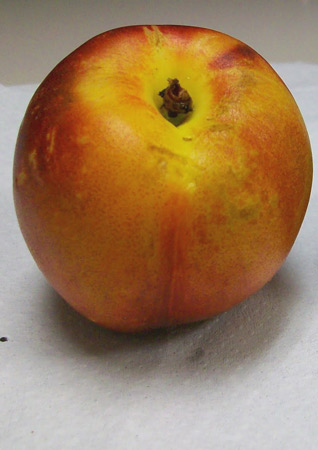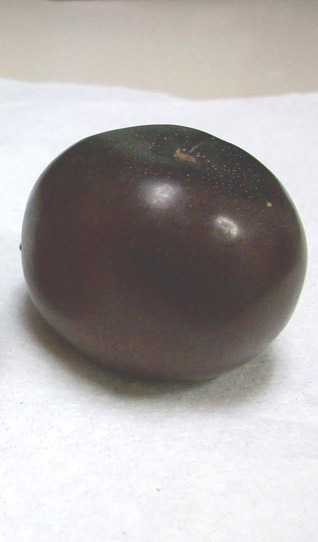Faith
The Peach & The Plum
Part I
PURAN SINGH [1881 - 1931]
First, life.
Then, its expression.
The plum and the peach, if they are alive, must burst into a white universe of flowers when spring comes. Out of every bud a stream of flowers flows and engulfs them entire.
The living peach and plum are thus at that moment unconscious of any outer universe but of their own flowers.
This spontaneous expression of the mystery of life, at once so metaphorical and symbolical, gives us a way to approach art. All art activity is silent and intense in the depths of being. The moments of its expression are like the visits of angels few and far between, but its labour at the roots is continuous.
And something happens, may be after centuries, after aeons, when all of a sudden, it bursts out into a rain of flowers. What is spring to trees, is inspiration to human race. And it is worthwhile to put up with a thousand winters for the sake of one day of blossoming as in spring.
The highest and most perfect individual is he who brings this spring of inspiration to man. Being anything or any person below this perfection is of no abiding interest to art and the artist.
Touched by His breath, the dead and the dying, the mean and the wretched, the sinful and the poor, spring into rage and become perfect and beautiful in a moment. This strange but oft repeated cosmic phenomenon of Nature is generally forgotten by us.
The best literature, the best art, the most creative art-impulse of any race, at any time of human history, as today always rained and rains from Heaven on man, Greatness flows to him. And the creations of that wondrous period of his inspiration become the noble classics of the human race, in all aspects of its social life.
Music, dancing, poetry, painting, sculpture, came out from happy and freed hearts, as the golden oranges bend with their profusion the delicate boughs of the orange tree. The golden harvests then ripen in such abundance that for centuries man reaps them and they still stand there waving in their original glory.
For ever, a dream beautiful. This dream lasts for ever. The ideals pervade life. And life grows.
There can be no democracy in the soul of Art. ‘Democratic Art’ is like the growth of grass in the meadows with a few tiny blue bells dancing. It may be pretty, but just pretty and nothing more. Art must agitate our souls. It must churn the blue ocean and, out of it bring a new sun and a new moon for the human race.
Anything short of a cosmic upheaval of the soul-consciousness of man as a whole race, its uplift as a whole race even to a few inches higher from where it was, is imitation, not genuine art. Imitation has its uses in schools as forms of training but that constitutes no grand expression of the Divine Inspiration.
Slaves alone appreciate microscopic drops on the lotus leaves, the freed men play with the sea and the sun and the moon.
Till Beethoven gave his symphonies, all thought their music was perfect. One freed genius freed human thought to a new infinite perspective of the art of music. But Beethoven brought it out of his own soul. Beethoven starts a new epoch in himself.
I do not think kingship of any kind is greater than this absolute despotism of an inspired man who opens a new subjective universe before us. Now, painters painting Beethoven’s symphonies in colour is criticism of art, not art. The bold and astonishing originality, as I have said, man-transmuting originality, is the first sign of the true artist.
Okakura Kakuzō [a Japanese scholar and acclaimed author of The Book of Tea] is rightly bitter against imitation when he says, “Imitation whether of Nature, of the old masters, or above all of self, is suicidal to the realization of the individuality, which rejoices always to play an original part, be it of tragedy or comedy in the grand drama of life, of man and of Nature.”
Rich kingship of soul flowers. The artistic consciousness is free, freedom follows. And in a great sense it is true that nothing can make man free but art.
I quote Okakura again when he says so beautifully:
“Fragments of nature in her decorative aspects, clouds black with sleeping thunder, the mighty silence of pine forests, the immovable serenity of the snow, the ethereal purity of the lotus rising out of darkened waters, the breath of starlike plum flowers, the stains of heroic blood on the robes of maidenhood, the tears that may be shed in his old age by the hero, the mingled terror and pathos of war, and the waning light of some great splendour -- such are the moods and symbols into which the artistic consciousness sinks before it touches with revealing hands that mask under which the universe hides.
“Art thus becomes the moment’s repose of religion, or the instant when love stops half unconscious on her pilgrimage in search of the Infinite, lingering to gaze on the accomplished past and dimly seen future -- a dream of suggestion, nothing more fixed -- but a suggestion of the spirit, nothing less noble.”
With this ideal of Art before you, you can now pass before your imagination’s eye, the glorious pageant of the Asiatic life that was inspired by the yellow-robed perfected humanity of Lord Buddha.
The Buddhistic Art, that blossomed like the flower-floods of that Asiatic spring, is the symbolic and metaphoric expression of the inner sovereignty that was experienced by the poor and the rich alike. The Lotus Throne of Buddha, in fact, became the lotus throne for everyone. If it was democracy of men, each seated on his throne.
Lord Buddha was not one of this democracy of the Spring. He was the hidden secret of the Breath of Spring, which made the blossoming of all with that miraculous suddenness possible. To Buddha raised every flower his crown and song in utter thankfulness and all submitted absolutely and unconditionally in joy of the Pure.
And sister Nivedita thus sums up in her beautiful words the atmosphere that the, Buddha created by his personality.
“To him (Okakura), it is not the ornamental or industrial features of his country’s art which really form its characteristic elements, but that great life of the ideal by which it is hardly known as yet in Europe. Not a few drawings of plum blossoms but the mighty conception of the Dragon, not birds and flowers but the worship of Death, not a trifling realism however beautiful but a grand interpretation of the grandest theme within the reach of human mind, the longing and desire of Buddha-hood to save others and not itself -- these are the true burdens of the Japanese Art.”
So we see how birth of the Buddha in India agitated the soul of Asia. The life of the Asiatic races of China and Japan was inspired by the Buddha.
So true Artistic expression of the soul-consciousness of a people is not so much in the nature of an acquired achievement as the spontaneous outflow of a spiritually rich self-realization.
CONTINUED TOMORROW …
The author was a poet, scientist and mystic who was inspired by Bhai Vir Singh. Author of a long list of books of both prose and poetry in English and Punjabi, his best known works include "The Spirit Born People," "The Sisters of The Spinning Wheel," "The Temple Tulips," "The Bride of The Sky," and "The Book of The Ten Masters."
[Courtesy: Harinder Singh. Edited for sikhchic.com]
February 6, 2013




